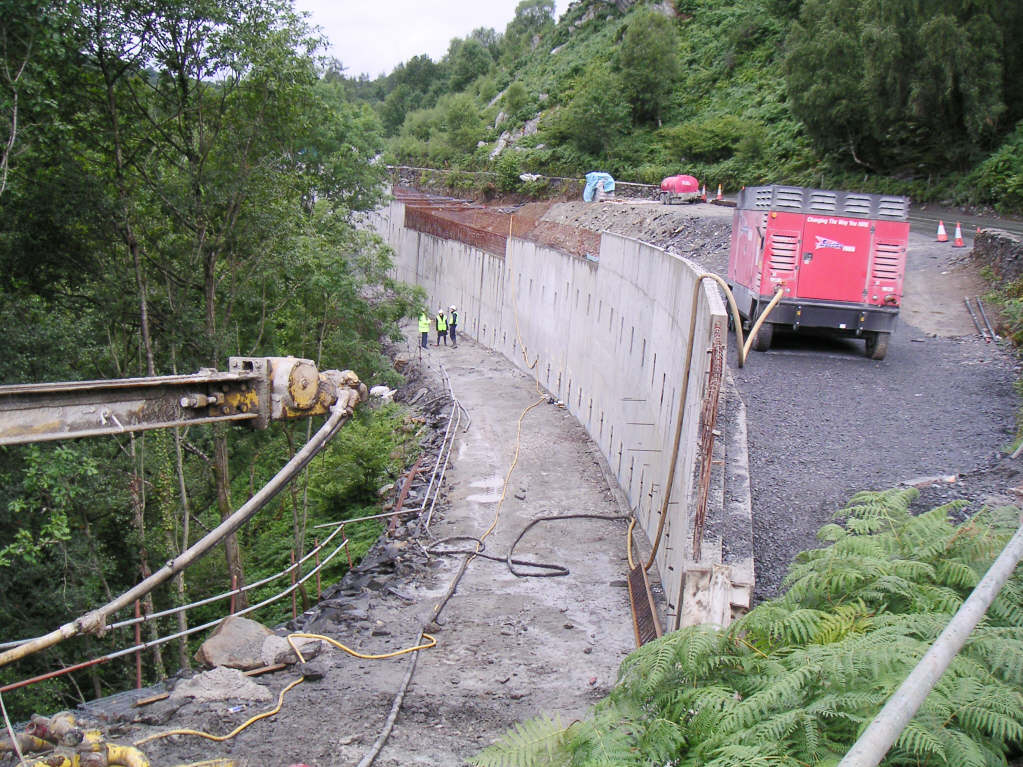Software Used on this Project
Project Overview
The widening and upgrade of 7.2km of the A470 Road, which runs along the Lledr Valley between North and South Wales, has improved safety and journey times for the once narrow and hazardous road. The highly sensitive environment along a steep section of the Snowdonia National Park adjacent to the Afon River posed a challenge, particularly for the construction of the 3.5km of retaining walls varying in height from less than 2m up to 13m.
Due to the rocky terrain, flexibility was required for planning and delivery, therefore a collaborative approach was adopted for this design-and-build contract between the client: Welsh Assembly Government, the client’s agent: Halcrow, the Contractor: Laing O’Rourke, and the Principal Designer: Arup.
How Oasys proved invaluable
An extensive range of the Oasys suite of structural and geotechnical engineering software was used to provide an innovative and adaptable solution. For structural analysis the software GSA and AdSec were used, and for the geotechnical aspects Frew, Slope and Pdisp were used, which cover analysis of retaining walls, slope stability, stability of retaining walls and soil settlement respectively.
The retaining walls consist of a combination of traditional stone walls, reinforced concrete walls with stone-clad parapets and cantilever stem walls. In taller sections an adaptable system using concrete panels and rock anchors was developed, with the panels of 3, 5 or 7m tall with either 2 or 4 rock anchors. The walls themselves are supported on rock or steel encased small diameter piles of 2-10m length. The steel cases limited debris in the pile bore and minimised cover required, providing a more efficient use of reinforcement cages. These piles were analysed using Oasys’ AdSec.

Extensive modelling and analysis of the retaining wall panels was carried out prior to construction using GSA, assessing the different panel heights, anchor angles and spacings. The effects of anchor forces and impact forces were evaluated. Slope stability was analysed using Slope to look at varying depths to rock, slope gradients and optimal pre-stressing requirements of rock anchors. The team used Pdisp to investigate the settlement of the road due to the construction of the concrete walls. In some instances new walls were propped against existing walls – the engineers used Frew to calculate the embedment depth of these walls to determine overall stability.
The road remained operational at all times so the sequencing of construction was critical. The team used Frew to analyse staging options to predict that where obstructions were found, retaining wall panels could be skipped and installed at a later date. This minimised the disruption of the traffic and overall programme. Frew was also used to analyse an option of backfilling prior to anchor installation – this minimised excavation and the need to compact the backfill in confined spaces around the anchors.
The simulation of the engineering tasks using both the geotechnical and structural software from Oasys enabled fast adaptation to site conditions to provide an efficient design. As a result of this process, amongst other factors, the project was delivered five months ahead of schedule and within budget.
